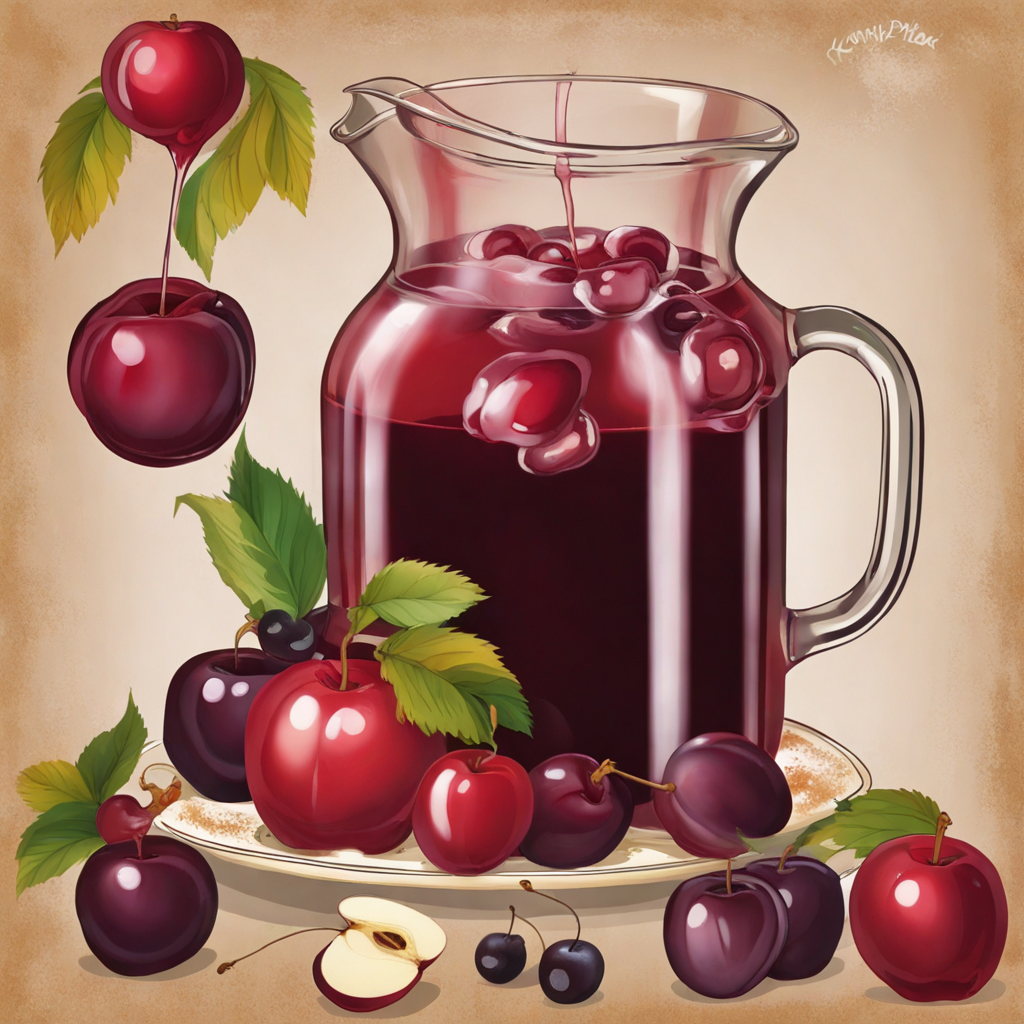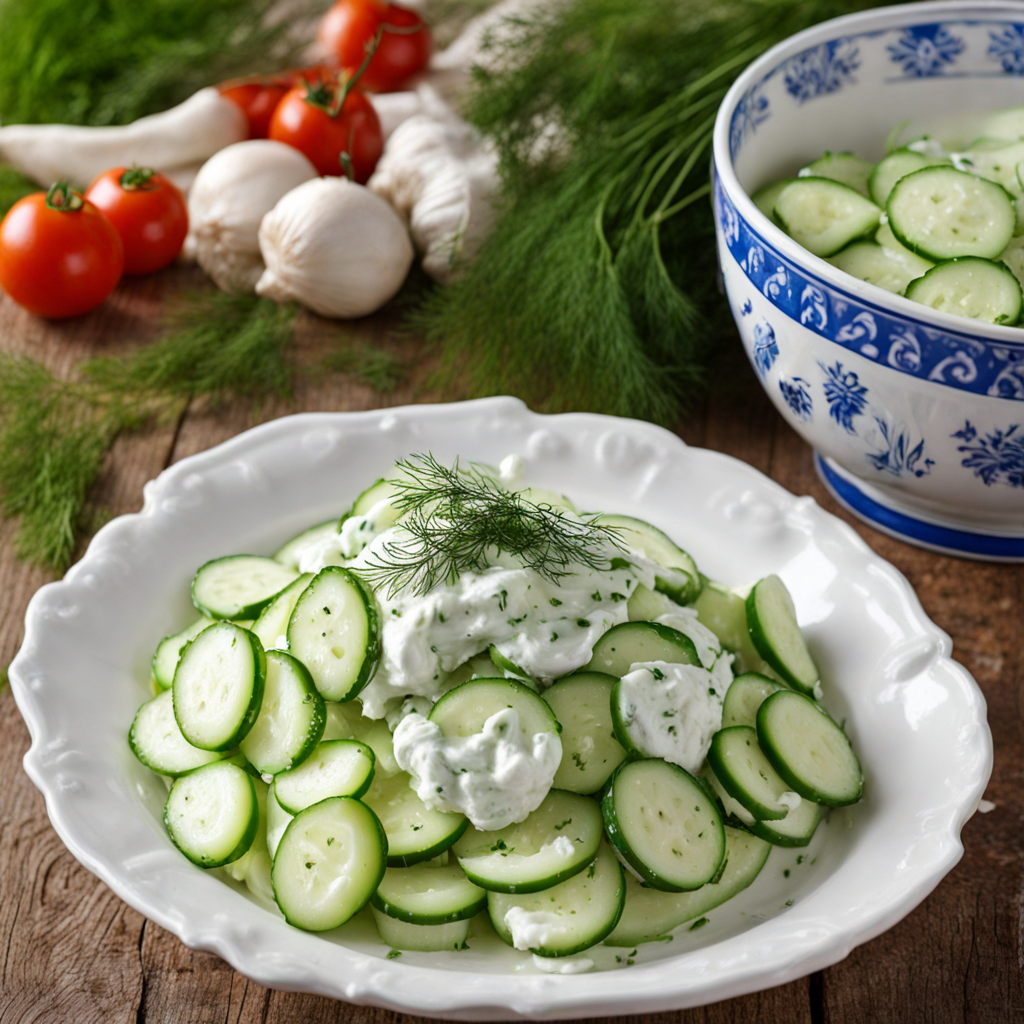Kompot
Kompot is a traditional Polish beverage that embodies the essence of homemade comfort, often enjoyed during family gatherings and festive occasions. This delightful drink is essentially a sweet fruit compote made by simmering a variety of fruits such as apples, pears, cherries, and plums in water with sugar and sometimes spices like cinnamon or cloves. The result is a fragrant, vibrant liquid that captures the natural sweetness and tartness of the fruits, making it a refreshing and aromatic treat that is both nostalgic and invigorating. The preparation of kompot is a labor of love, typically involving fresh, seasonal fruits, which not only enhances the flavor but also adds a splash of color to the drink. The fruits are cooked gently, allowing their flavors to meld and infuse into the water, creating a soothing beverage that can be enjoyed warm or chilled. In Poland, kompot is often served during holiday meals, particularly during Christmas, where it complements traditional dishes and adds a fruity note to the table. What makes kompot particularly special is its versatility; it can be made with a single type of fruit or a medley, allowing for endless combinations and flavors. The drink is not just a thirst quencher but also a way to preserve the taste of summer fruits, as it can be enjoyed year-round. As it cools, the infused fruits can be served alongside, making it a delightful addition to any meal or a standalone refreshment that highlights the simple joys of seasonal produce.
How It Became This Dish
The Sweet Legacy of Kompot: A Polish Culinary Tradition Origins of Kompot Kompot, a sweet beverage made by simmering fruits in water with sugar, has deep roots in Central and Eastern European culinary traditions. The term "kompot" is derived from the Latin "compositus," meaning "mixture." While its precise origins are difficult to pinpoint, variations of this fruit-based drink can be traced back to ancient civilizations, where fruits were often preserved in syrup or steeped in water to create refreshing beverages. In Poland, kompot became a staple during the 19th century, coinciding with the rise of a more settled agricultural lifestyle. As fruit cultivation flourished in the fertile lands of the Vistula and Oder river valleys, households began to experiment with different combinations of seasonal fruits, leading to the traditional Polish kompot we recognize today. It is particularly noted for its use of fruits that are abundant in the region, such as apples, pears, cherries, plums, and berries. Cultural Significance In Polish culture, kompot is more than just a drink; it embodies the spirit of hospitality and the importance of family gatherings. Traditionally served at festive occasions, such as Christmas and Easter, kompot occupies a special place at the dinner table, often accompanying hearty meals. The drink is not only a refreshing beverage but also a source of nostalgia, evoking memories of family meals and the joys of seasonal harvests. Kompot is especially significant during the summer months when fresh fruits are abundant. Families often prepare large batches to enjoy throughout the hot days, and the drink is commonly served chilled or at room temperature. It is a perfect example of how Polish cuisine emphasizes the use of local, seasonal produce, reflecting a sustainable approach to eating that has persisted through generations. In addition to its role in holiday meals, kompot also serves as a symbol of Polish resilience and adaptability. During times of hardship, such as World War II and the communist era, families found creative ways to utilize whatever fruits were available, demonstrating an ability to make the most of limited resources. Thus, kompot represents not only a culinary tradition but also a testament to the enduring spirit of the Polish people. Development Over Time As Poland underwent significant political and social changes throughout the 20th century, so too did the preparation and consumption of kompot. After World War II, Poland experienced a shift towards collectivization and industrialization, which impacted agriculture and food production. During this time, kompot remained a beloved staple, but the types of fruits available for use often depended on the seasonality and availability dictated by state-run farms. In the post-war era, kompot began to be commercialized, with canned versions becoming popular. This development allowed people to enjoy the flavors of kompot year-round, even when fresh fruits were out of season. However, many Poles still prefer homemade kompot, as it carries a sense of authenticity and connection to their culinary heritage. Families often have cherished recipes passed down through generations, with each household adding its unique twist, such as incorporating spices like cinnamon or cloves for added warmth and depth. The fall of communism in 1989 initiated a new chapter for Polish cuisine, leading to increased globalization and exposure to international culinary trends. While this brought about many changes in food culture, kompot retained its place as a beloved traditional drink. In the 1990s and early 2000s, a revival of interest in traditional Polish foods saw many younger generations reconnecting with their roots, embracing both the history and the flavors of dishes like kompot. Today, kompot is enjoyed not only in Poland but also among Polish diaspora communities worldwide. It has become a symbol of cultural identity for Poles living abroad, serving as a reminder of home and tradition. The drink is often prepared during family gatherings, holidays, and community festivals, allowing individuals to share their culinary heritage with others. Modern Variations and Innovations While the classic kompot is primarily associated with simple fruit and sugar combinations, contemporary interpretations have emerged. Modern culinary enthusiasts have begun to experiment with flavors, incorporating herbs, spices, and even exotic fruits not traditionally found in Poland. Some innovative recipes include adding mint, ginger, or even citrus to enhance the drink's flavor profile, showcasing the adaptability of kompot to modern palates. In addition to the traditional method of simmering fruits, some recipes employ cold brewing techniques, allowing the flavors to infuse without heat, which preserves the freshness of the ingredients. This trend aligns with a broader movement towards healthier, more natural beverages, reflecting a growing interest in wellness and sustainability among consumers. The rise of craft beverages has also influenced the kompot landscape, with some Polish breweries and beverage companies producing bottled versions that retain the essence of homemade kompot while appealing to a wider audience. These commercial products aim to capture the nostalgic flavors of traditional kompot while providing convenience for modern lifestyles. Conclusion Kompot stands as a testament to Poland's rich culinary heritage, embodying the values of family, tradition, and resilience. Its evolution from a simple homemade drink to a beloved cultural icon reflects the broader changes in Polish society over the centuries. As it continues to adapt to modern tastes and lifestyles, kompot remains a cherished link to the past, offering a sweet reminder of home, community, and the joys of sharing food with loved ones. Whether enjoyed at a festive gathering, sipped on a hot summer day, or served as a nostalgic reminder of childhood, kompot is more than just a beverage; it is a celebration of Polish culture and a delicious tribute to the bountiful fruits of the land.
You may like
Discover local flavors from Poland







